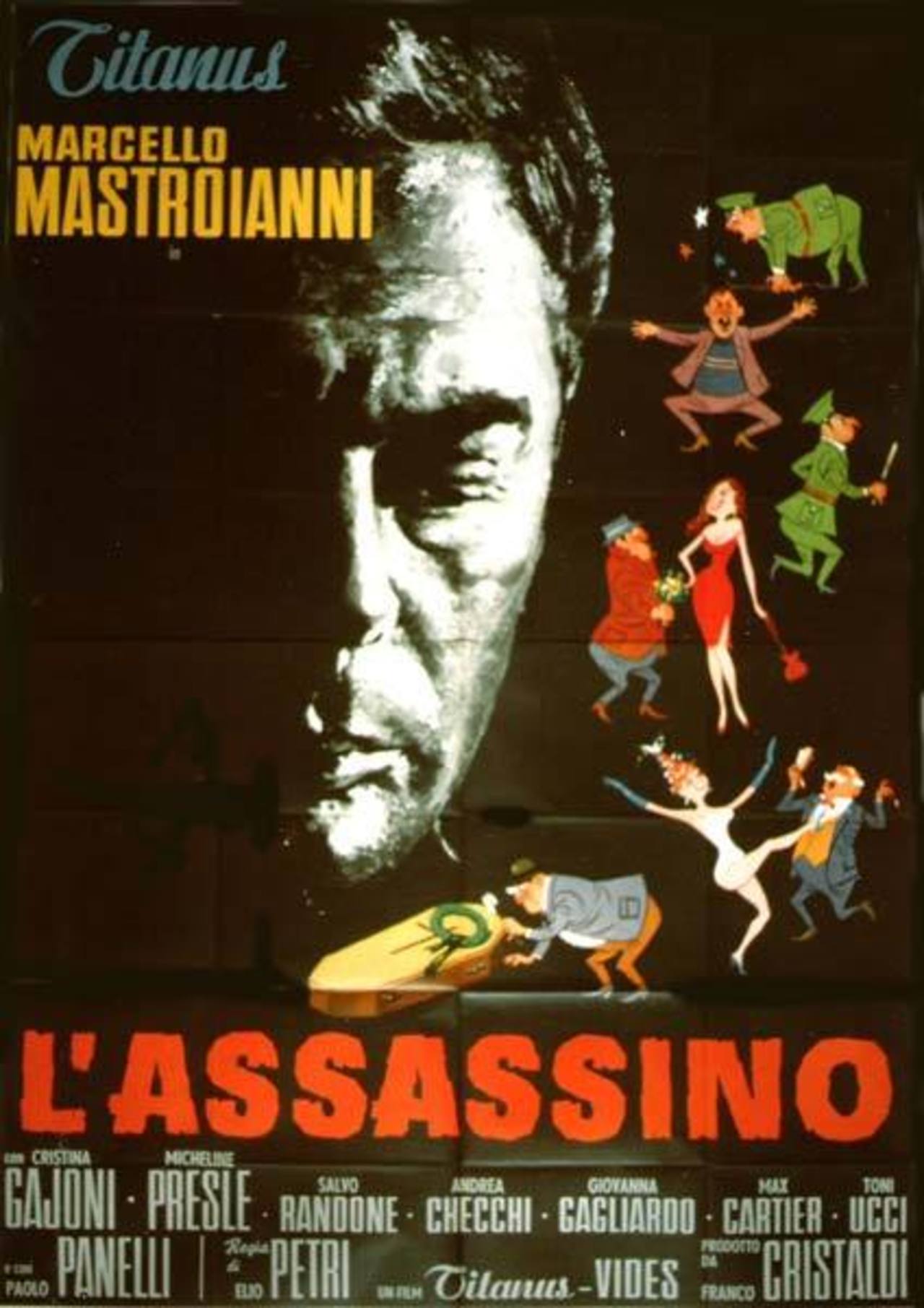Making his debut behind the camera, Elio Petri already demonstrates the robust dexterity that was the trademark of his dense and stimulating career in Italian cinema. His protagonist, a social climber full of pettiness, embodies the sense of squalor lurking in the shadows of the emerging economic boom, which will clean the slate of the collective ideals that kept Italy together after the war. It was thanks to the director that the role was entrusted to Marcello Mastroianni, who manages to express the undercurrent of hidden mediocrity behind a face that exudes an instinctive trustworthiness. At first glance, it’s a mystery – there’s a dead body and a detective (a great performance by Salvo Randone, one of Petri’s favourite actors). But the film gradually drifts away from solving the crime, and focuses more on finding a more subtle type of guilt.
An antique dealer is taken to a police station to be interrogated. Nobody tells him why he is being questioned, so the man tries to imagine what he might be guilty of. He examines his memories and his conscience, but gets no closer to the truth. It turns out that he is the prime suspect in the murder of a woman. He may not be guilty, but is anybody ever completely innocent?
Restoration
The film was restored by Cineteca di Bologna and Museo Nazionale del Cinema di Torino, in collaboration with Titanus. The digital restoration was carried out from the original camera negatives, and from a vintage lavender print for the first and last reels, which were missing some sections. Both elements were scanned at a resolution of 2K. In order to recreate the original splendour of the film, digital grading was performed using a positive vintage copy as a reference, conserved by Titanus at Cineteca di Bologna. The original soundtrack was digitally restored from the 35mm optical negative, from which a positive track was printed. The restoration process created a conservation dupe and a new negative track. Restoration work was carried out by L’Immagine Ritrovata laboratory in 2011.
Making his debut behind the camera, Elio Petri already demonstrates the robust dexterity that was the trademark of his dense and stimulating career in Italian cinema. His protagonist, a social climber full of pettiness, embodies the sense of squalor lurking in the shadows of the emerging economic boom, which will clean the slate of the collective ideals that kept Italy together after the war. It was thanks to the director that the role was entrusted to Marcello Mastroianni, who manages to express the undercurrent of hidden mediocrity behind a face that exudes an instinctive trustworthiness. At first glance, it’s a mystery – there’s a dead body and a detective (a great performance by Salvo Randone, one of Petri’s favourite actors). But the film gradually drifts away from solving the crime, and focuses more on finding a more subtle type of guilt.
An antique dealer is taken to a police station to be interrogated. Nobody tells him why he is being questioned, so the man tries to imagine what he might be guilty of. He examines his memories and his conscience, but gets no closer to the truth. It turns out that he is the prime suspect in the murder of a woman. He may not be guilty, but is anybody ever completely innocent?
Restoration
The film was restored by Cineteca di Bologna and Museo Nazionale del Cinema di Torino, in collaboration with Titanus. The digital restoration was carried out from the original camera negatives, and from a vintage lavender print for the first and last reels, which were missing some sections. Both elements were scanned at a resolution of 2K. In order to recreate the original splendour of the film, digital grading was performed using a positive vintage copy as a reference, conserved by Titanus at Cineteca di Bologna. The original soundtrack was digitally restored from the 35mm optical negative, from which a positive track was printed. The restoration process created a conservation dupe and a new negative track. Restoration work was carried out by L’Immagine Ritrovata laboratory in 2011.


